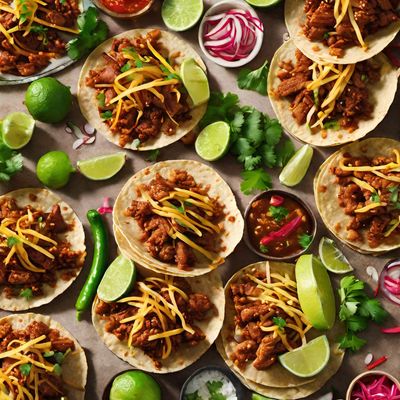
Ingredient
Fermented vegetables
The Tangy Transformation: Unleashing the Power of Fermented Vegetables
Fermented vegetables are created through the process of lacto-fermentation, where beneficial bacteria convert the natural sugars in vegetables into lactic acid. This process not only enhances the flavor of the vegetables but also increases their nutritional value. Fermented vegetables have a unique tangy taste, a crisp texture, and a vibrant appearance. They can range from crunchy sauerkraut to spicy kimchi, offering a wide variety of flavors and textures to explore.
Origins and history
The practice of fermenting vegetables dates back thousands of years and can be found in cultures around the world. Fermentation was initially used as a preservation method to extend the shelf life of vegetables before the advent of refrigeration. It is believed to have originated in ancient China and spread to other regions, including Europe, where sauerkraut became a staple. Fermented vegetables have since become an integral part of many cuisines, such as Korean, Japanese, and Eastern European.
Nutritional information
Fermented vegetables are rich in beneficial bacteria, enzymes, and vitamins. They are a good source of dietary fiber, vitamin C, and vitamin K. Additionally, the fermentation process increases the bioavailability of nutrients, making them easier for the body to absorb.
Allergens
Fermented vegetables are generally allergen-free, but individuals with sensitivities to certain vegetables should exercise caution.
How to select
When selecting fermented vegetables, look for jars or packages that are tightly sealed and free from any signs of spoilage, such as mold or off-putting odors. The vegetables should have a vibrant color and a crisp texture. It is also advisable to choose products that are made with organic or locally sourced vegetables for the best quality and flavor.
Storage recommendations
Fermented vegetables should be stored in the refrigerator to slow down the fermentation process and maintain their freshness. They can be kept in airtight containers or jars, ensuring that they are fully submerged in their brine or liquid. Proper storage will help preserve their flavor and texture for an extended period, typically up to several months.
How to produce
Amateur enthusiasts can easily produce fermented vegetables at home by following simple recipes and techniques. The process involves chopping or shredding the vegetables, adding salt or a starter culture, and allowing them to ferment in a jar or crock for a specific period. With proper sanitation and careful monitoring, anyone can enjoy the satisfaction of creating their own tangy and probiotic-rich fermented vegetables.
Preparation tips
Fermented vegetables can be enjoyed as a condiment, a side dish, or incorporated into various recipes. They can be added to salads, sandwiches, tacos, or stir-fries to provide a tangy and crunchy element. When using fermented vegetables in cooked dishes, it is best to add them towards the end of the cooking process to preserve their probiotic benefits. Additionally, rinsing the vegetables before use can help reduce their saltiness if desired.
Culinary uses
Fermented vegetables are commonly used as a condiment or side dish to add a burst of flavor to meals. They can be served alongside grilled meats, sausages, or cheese platters. Fermented vegetables are also a key ingredient in traditional dishes like kimchi fried rice, sauerkraut soup, or pickled vegetable salads. Their versatility allows them to be incorporated into a wide range of cuisines, adding depth and complexity to various recipes.
Availability
Fermented vegetables are commonly available in grocery stores, health food stores, and specialty markets worldwide. They can also be found at farmers markets or made at home.
More ingredients from this category
Recipes using Fermented vegetables » Browse all

Twice Cooked Pork with Spicy Black Bean Sauce
Sizzling Sichuan Pork Delight

Kimchi with a Nordic Twist
Nordic Kimchi: A Fusion of Korean and New Nordic Flavors

Chinese-style Chicken Tikka Masala
Spicy Sichuan Chicken Tikka Masala

Kimchi Jjigae with Tofu and Pork
Spicy and Savory Kimchi Stew with Tofu and Pork

Sichuan-style Laksa
Spicy Sichuan Laksa: A Fiery Twist on a Malaysian Classic

Taiwanese-style Laksa
Taiwanese Spicy Coconut Noodle Soup

Korean-style Tacos al Pastor
Bulgogi Tacos: A Fusion of Mexican and Korean Flavors

Sichuan-style Beef Wellington
Spicy Sichuan Beef Wellington: A Fusion Delight

Hunan-style Feijão Tropeiro
Spicy Hunan Feijão Tropeiro: A Fusion of Brazilian and Chinese Flavors

Anhui-style Fagiolata
Savory Bean Stew with Anhui Flair

Pascuense Kimchi-Guksu
Spicy Noodle Soup with Island Flavors

Hubei-style Spicy Lobster
Fiery Lobster Delight: A Spicy Hubei Twist
